#Anna DeForest
Text
the 20th anniversary issue of 'sleepingfish' is now on line
This 20th anniversary issue features work by Steven Alvarez, Rosaire Appel, Ali Aktan Aşkın, Nat Baldwin, Niles Baldwin, Maeve Barry, Chiara Barzini, Mark Baumer, Emilio Carrero, Kim Chinquee, David-Baptiste Chirot, Bobby Crace, Anna DeForest, Federico Federici, Noah Eli Gordon, Mariangela Guatteri, John Haskell, Chelsea Hogue, Tim Horvath, Zebulon House (or Horse), Meiko Ko, Kelly Krumrie, Mary…
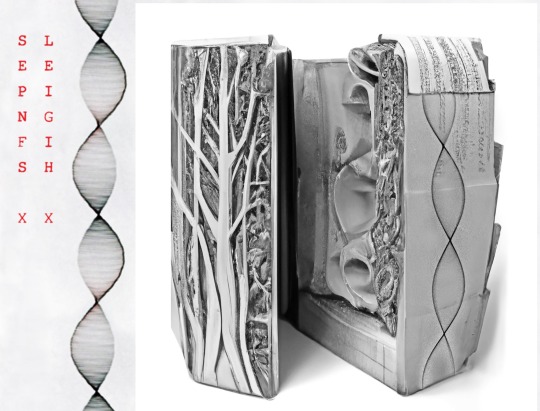
View On WordPress
#Ali Aktan Aşkın#Angela Woodward + Yuxin Zhao#Anna DeForest#Babak Lakghomi#Bobby Crace#Cal A. Mari#Calamari Archive#Carla Rak#Carlos M. Luis#Chelsea Hogue#Chiara Barzini#David Baptiste Chirot#David Nutt#Derek White#Elijah Sparkman#Elle Nash#Emilio Carrero#Eugene Lim#Federico Federici#Garielle Lutz#ink#Jada Smiley#John Haskell#John Madera#Jonathan Sargent#Justin Torres#Kelly Krumrie#Kim Chinquee#Kim Parko#Maeve Barry
0 notes
Note
Scuttling into ur askbox like a little beetle
i think i recall you reblogging/posting things about geography and culture + human effect on it - I vaguely recall a piece of art where it showed a blurred out, cropped piece of people fighting, and focused instead on the flora in the scene.
ANYWAY! getting back on track. seeing that piece inspired me to take a course this semester called "people and the land: cultural geography". and the whole reason I came to your askbox was to ask if you had any suggested reading materials? We'll get stuff in class ofc, but I am curious to see if there's any bias of materials on the prof's side vs someone else.
Phew that was a long ask. thank you o/!
That sounds like Liz Anna Kozik’s piece : D So happy it stuck with you! I love her work!!
As for your ask, what an awesome class! Land-human relationships are my bullshit, and I really enjoyed my own cultural geography class.
Thinking back on my schooling, I would say about 70% of my classes fell in with the “everything is awful and humans are the worst” narrative, and the other 30% made time for land-human relationships other than the extractive hellscape that most people currently live under. So, full disclosure, when I think of “bias,” that’s what I think of. You grow up in the miasma, it’s hard to imagine that there’s any other way of living. It’s also hard to say without knowing the professor, but I think, in general, it’s good to be mindful of who is or isn’t telling the story.
ANYWAY. All that in mind, here’s some articles about people-land relations that I think are neat:
The Environment and Society portal - I like their digital exhibits especially. I remember enjoying Oceans in Three Paradoxes and The Northwest Passage. Great place to wander around and pick a random article that catches your eye.
Of Deserts and Decolonization: Dispelling Myths About Drylands – obligatory desert propaganda. An article looking at how colonial mindsets about deserts disrupt existing relationships and hurt both people and land, and also how those attitudes shape environmentalism/conservation/etc. still today.
The Miracle of the Commons – lovingly challenging the Tragedy of the Commons with a creative solution to poaching and human-animal conflict in South Africa, Zimbabwe, and Namibia. Great article to sit in discomfort about (productively!)
Biodiversity: The Variety of Life that Sustains Our Own – Contains one of my go-to examples when explaining how humans can be good for land and biodiversity, the story of Quitobaquito Springs (and its sister spring Ki:towak, though the author doesn’t mention it here.)
The Environmental History Timeline - just fun to look at, especially the further you go back. It’s funny to spot where a young branch of history is trying *really hard* to reframe how academia thinks about the past, by bringing the invisible landscape forward:
2700 BCE — Epic of Gilgamesh describes vast tracts of cedar forests in what is now southern Iraq. Gilgamesh defies the gods and cuts down the forest, and in return the gods say they will curse Sumeria with fire (or possibly drought). By 2100 BCE, soil erosion and salt buildup have devastated agriculture. One Sumerian wrote that the “earth turned white.” Civilization moved north to Babylonia and Assyria. Again, deforestation becomes a factor in the rise and subsequent fall of these civilizations. (Perlin, 1991).
2700 BC — Some of the first laws protecting the remaining forests are decreed in Ur, Messopotamia. (Grove, 1995).
^^^ fucking around and finding out forever and ever and ever.
#thank you for reaching out! I hope you enjoy your class!#i hope i understood this correctly and that these are helpful. and if not. well. there was an attempt 🤪#love this land#for science
84 notes
·
View notes
Text
Worldbuilding: Collapsing Empires
One of our classic stories is the band of Plucky Rebels against the Evil Empire. I will boldly go on record as saying I love these stories. Who doesn’t want to cheer on the rag-tag determined heroes fighting against overwhelming odds? (See Star Wars, The Last Starfighter, The Magnificent Seven, and so many others.)
On the other hand I also read history, and so there’s something I’ve noticed. While the urge to create an empire seems to be a human constant, individual empires always fall. Eventually.
I’m sure there are many reasons for this. I’ll give you a few I’ve noticed; you can probably suggest more. The three I’ve got are environmental shifts, out of context problems, and the elite desire to stay in power at all costs.
Each of these can, of course, feed into the others. Here’s a few examples.
Environmental shifts are nasty. Some are from human land use - deforestation and gold or lead mining do numbers on large areas - but others are just the solar system giving you a Bad Era. To be very general, our climate tends to alternate between periods of warmer and more predictable weather, and cooler, less predictable weather patterns. (You can in fact have a scorching drought or a dozen in an Ice Age. It’s just on average cooler.)
Empires tend to get started and grow during the good times, to the point they’re right on the edges of their ecological limits as to how many people can make a living without starving. And then a bad spot hits. And things go sideways. As they say of bankruptcies, first slowly, then all at once. Famines usually start in some spots, and the empire handles it, getting ever more stressed - and then worse weather sparks floods and mudslides, and out of that ecological havoc you tend to get plagues, and between plague and famine you can’t feed or levy enough troops.... And then law and empires collapse as everyone scrambles madly to survive and people who were on the empire’s borders try to make out like a bandit. Pun fully intentional.
A “sudden” (usually over decades) climate change might be considered an out of context problem... but I had more direct and weirder things in mind. At one point, for example, we had archaeological evidence that the Luwian Kingdom might have been wiped out by a comet strike. Current archaeology thinks not, but the scenario still remains possible for fiction. Not to mention the scholarly wrangling over what really happened to Sodom and Gomorrah. It looks like the real-life cities were on a very oil-rich plain. So theoretically, if a meteor shower came down and punched a few holes....
But you don’t have to look to outer space. Cortez and other conquistadores showed up from across the Atlantic with a deep history of warfare that was an extremely out of context problem for the Aztecs, Incas, and many more. (Yes, diseases played a big role. But historically the conquistadores legit beat local armed forces high, wide, and handsome.) Joseon Korea and Tokugawa Japan had similar problems with the rest of the world. Anna and the King is a fictionalized version of the King of Siam trying to ease his kingdom into a soft landing in the modern world. I can only imagine the battles he must have had with his court over that.
Which leads to the third reason I see empires fall. If a ruler wants to keep ruling, and doesn’t trust his people, he has to make sure no one else is strong enough to oppose him. But keeping everyone too weak to fight you means that sooner or later, they’re too weak and corrupt to fight someone else.
And on the edges of an empire, there is always Someone Else.
Side note: This is one of many reasons I think a republic is the best government to create and maintain a nation. Ideally we have people in power getting overthrown all the time. We just do it on an agreed-upon regular basis. Unfortunately that was also supposed to apply to all bureaucracy....
Anyway. If you’re writing Plucky Rebels against the Evil Empire, go for it! But you might want to also poke some history and see if any of these real-world factors apply. Smart rebels take advantage of an existing crisis! Just ask Li Zicheng.
Though note what happened to him....
38 notes
·
View notes
Text
“This fascination with disaster, both fear and fetish, I never quite outgrew. The truth is, you start to sort of wish for it. Like some Czech said: Vertigo is something other than the fear of falling. Half the rush is wanting it. Wanting to get it over with.”
– Anna DeForest, A History of Present Illness
14 notes
·
View notes
Text
i cant sleep... lets go on with the liveblogging. ep2 beloved
episode two, really red. in which someone gets angry
i really do love mabels voicemail message so much. customer service voice
to let the world know that i died for love..ok
shes so parasocial but the best part about it is shes actually not
its so funny to me. mabel is, arguably, somewhat, dead in a ditch somewhere
YOU HEAR ME SO I KNOW IM REAL. dies and kills
annas Things with reality hit so much while quarantining they really did. it was so much.

ive always wondered so much about this part. first of all, what is she talking about? i always kind of got the impression it was a bird. was it tressa? was it the dead baby crow from later in this episode? secondly, who is recording this? i don't think this is annas voicemails at all. for a while ive had a theory that the house/hill is the one listening in on everything and weaving a story together, which kind of falls apart if you consider episode eleven and a big chunk of season seven, but which is still interesting to consider. i just dont know what this is all about.

SHES SO OBSESSED. i get her
mabel doesnt have to watch anyone die mabel doesnt have to take responsibility for anything...
sallys ambassador complaining about deforestation dream is so funny. ambassador for who mrs martin!!! like she is SO haunted by the faeries imagine what it must have been living there all her life, always reachable by them, always reached by the house...
everything will be the same until something changes another point for the timeloop girlies
THE HOUSE IS WAITING!
THE DREAM UGHHHH i do believe this is luna but of course the boundaries between luna and mabel are at this point sort of meaningless. and like. her letting mabel back into her head...also "i dont think our dreams really mean anything there's too much white nose in our heads" is soo her like subconsciously removing guilt from herself. love you anna
can you guys believe they werent written to be romantic until like episode seven or something. i cant!
shes soooo gothicheroine.......

THIS IS SO FUCKING. UGH!!!!!!!!!! making her an accomplice making her culpable...
anna limon asmr
"this is as much your fault as it is mine. i hope you know that. you might not be here, but... you're here, you're in this with me. THIS IS YOUR STORY TOO EVEN IF YOU WONT ADMIT IT!!!!"
#andys seventh mabel relisten: a beautiful liveblogged adventure#um sorry for the inconsistent quoting system it makes sense to me ok..
7 notes
·
View notes
Text
“Cormac McCarthy’s latest offering—in that word’s fundamentally spiritual sense—is The Passenger and its coda or addendum, Stella Maris. One is prompted to read The Passenger first (it came out in October) and Stella Maris second (it came out in December). If, however, you dare to test the trickster and begin with Stella Maris—a 189-page conversation between a psychiatrist and his patient—it will seriously trouble your perception of The Passenger. If you read the books in order, you might find Stella Maris (Latin for Star of the Sea, a psychiatric hospital in Black River Falls, Wisconsin) coldly underwhelming despite, or perhaps because of, the erudition of the twenty-one-year-old, debatably schizophrenic, suicidal math genius Alice Western. The confines of the construct—the conversation—serve McCarthy’s most recent obsessions: mathematics, quantum mechanics, topology (the theory of which Alice admiringly describes as “a place to stand where you can look back at the world from nowhere”); as well as the subjects of his abiding interests: language, the unconscious, evil, the world’s indifference. But the construct here doesn’t allow the cloaking of concepts in character. Mathematics is a different language, being not a language at all. It is not literature; it is antithetical to literature. The interlocutor, a Dr. Cohen, is no Grand Inquisitor, no Judge Holden. He is professionally, incurably dull, the most deliberately uninteresting voice McCarthy has ever uttered. McCarthy has pocketed his own liturgical, ecstatic style as one would a coin, a ring, a key, in the service of a more demanding and heartless inquiry through mathematics and physics into the immateriality, the indeterminacy, of reality.
McCarthy is not interested in the psychology of character. He probably never has been. He’s interested in the horror of every living creature’s situation. (…)
Anna DeForest, in her taut, smart book A History of Present Illness, points out that brain death as death was pretty much invented, the criteria for it established by a committee at Harvard in 1968. The Church, weighing in on the implications of ventilators (which had replaced the massive machinery known as iron lungs keeping permanently compromised or comatose people alive) said it was permissible to turn off the machines in hopeless cases if the soul had left the body—exitus animae.
“The heart,” DeForest writes, “was once considered the seat of the soul, then Descartes relocated it to the pineal gland, one of the only unpaired structures in the brain, and then it was done away with entirely.”
Well, as far as medicine was concerned. And you know doctors, always trying to find the most convenient way out of ethical dilemmas.
(…)
The Passenger is McCarthy’s eleventh novel. Eleven: the Master Number. Each book has been linguistically astounding. Of the first three—The Orchard Keeper, Outer Dark, and Child of God—the critic John W. Aldridge, who found McCarthy’s genius “bizarre,” noted that through a “lexical chemistry” language established itself as the authoritative character, “declaring its sovereignty over the other characters by creating a context in which they take on a richness of meaning that they do not in themselves possess.” Suttree, somewhat of an indulgence, a romp, a Knoxville picaresque, closed out the Seventies. In the Eighties was Blood Meridian, his vicious masterwork. Harold Bloom placed it in his canon of the American Sublime, considering the figure of the Judge “violence incarnate,” and, “short of Moby Dick, the most monstrous apparition in all of American literature.”
(…)
After Blood Meridian came the sorrowful Border Trilogy of the Nineties—All the Pretty Horses,The Crossing, and Cities of the Plain—where bildungsroman ends not in wisdom but at the gate where the spirit falters. McCarthy has always been interested in this gate beyond which lies the World as it is that waits. Sometimes it’s described as a “sweatsoaked beast, some hooded and wheezing abhorrence”; sometimes, nameless, it presumes a name—The Archatron.
In the first decade of our fresh now weary century, No Country for Old Men was published, exploring further the bloody erosion of any western code that might once have been pretended to. One year later came The Road—another masterpiece, apocalyptic, purer, love-soaked, more awful and divine.
(…)
In Alice’s opinion the bomb was one of the most significant events in human history, right “up there with fire and language . . . at least number three and it may be number one.”
Numbers, numbers, they can be fascinating, even droll, and can pop up anywhere. (The code name for the Enola Gay, the “delivery” plane, was “Dimples 82.”) Alice’s idol, Grothendieck, described scientists and mathematicians as the most dangerous people on the planet, providing annihilating technological power to generals and politicians. The discoverers don’t have a clue as to what they want to discover. They’re drawn to the intrigue of experiment, the elegance of theory. No sin, no responsibility. No guilt, no foul.
They want to separate the world from its secrets but very much want to keep their own, this they, these authorities. In this world of passengers they ask questions to which no answer will suffice. They make things inaccessible—land, bank accounts, a Maserati in a garage, one’s very sense of being, of self. McCarthy’s creatures flee these forces, flee and settle like frightened birds, trying to evade that which does not wish them well, which seeks nothing less than their erasure. Time transports and tears them from place to place: deserts, shores, mountains, Knoxville, Tucson, El Paso, Chicago, New Orleans. It’s said that McCarthy never writes about a place he’s never been. This might be true, I suppose, with the exception of Hell—the Demonium—which he still manages to describe with obscene glamour.
(…)
The novel is dizzyingly, meticulously constructed, the orchestration of time—of passage, essentially—conducted rigorously, unfathomably, like a mathematical inquiry into the spiritual. For all the classic McCarthy turns here—the rowdy regionalisms and high rhetoric, the attention to the gear and tackle and trim of working life, the stratagems of music and conspiracies and spending gold, the stuff of things built, houses, oil platforms, violins—the primary, the overwhelming subject is the soul. Where can it be found? By what means does it travel? Is it frightened when we take leave of it? Can it find rest in the darkness? Animula vagula blandula. The soul. The freed and missing passenger.
Cormac McCarthy has been writing great, rawly humorous, beautiful, terrifying books for years. There’s more than a hint of the Ogdoad in these two, a sacramental yet heretical consciousness. Stella Maris is a performance of authorial sport and maybe necessity, but it’s all but ungraftable onto The Passenger, which might as well have been written on vellum as befits a codex. This is a book that demands that we pay attention, an outrageous skirting of today’s rules of literary engagement.
McCarthy has long maintained a reverence for the unconscious, a belief that language can pay only inadequate homage to it. It’s that part of being that knows what cannot be known only through its own particular process. Perhaps the business of The Passenger, for all its somber romanticism and Gnostic leanings, is to defer to this unconsciousness, to give shape to that which might well be the soul, or at least its most faithful companion.
“Everything vanishes forever. To the extent that you refuse to accept that, then you are living in a fantasy,” says the fantastical Alice. A new Realism much like the old.
And perhaps the situation here is that Bobby and Alice, an Adam and Eve twice banished, are in Kierkegaard’s phrase “kins of the mould.” That they and their acquaintances are already gone—afterimages lingering in the afterlife of a mock moon, soon to be made absent forever in a world waning null.”
youtube
“I wouldn’t normally live in Santa Fe. It’s little artsy for my taste. I tried to get them to move the institute to Texas.”
2 notes
·
View notes
Text
Sleepingfish XX
Notions (about the object under investigation), «Sleepingfish» XX anniversary issue, Derek White, Garielle Lutz editors, 2024, ISBN 9781940853208.
This 20th anniversary issue features work by Steven Alvarez, Rosaire Appel, Ali Aktan Aşkın, Nat Baldwin, Niles Baldwin, Maeve Barry, Chiara Barzini, Mark Baumer, Emilio Carrero, Kim Chinquee, David-Baptiste Chirot, Bobby Crace, Anna DeForest,…
View On WordPress
0 notes
Text
The Sunday Read: ‘Has the Amazon Reached Its “Tipping Point”?’
https://sciencespies.com/environment/the-sunday-read-has-the-amazon-reached-its-tipping-point/
The Sunday Read: ‘Has the Amazon Reached Its “Tipping Point”?’

Adrienne Hurst and
Dan Farrell and
Listen and follow The Daily
Apple Podcasts | Spotify | Stitcher
In the past half-century, 17 percent of the Amazon — an area larger than Texas — has been converted to croplands or cattle pasture. Less forest means less recycled rain, less vapor to cool the air, less of a canopy to shield against sunlight. Under drier, hotter conditions, even the lushest of Amazonian trees will shed leaves to save water, inhibiting photosynthesis — a feedback loop that is only exacerbated by global warming.
According to the Brazilian Earth system scientist Carlos Nobre, if deforestation reaches 20 to 25 percent of the original area, “flying rivers” — rain clouds that recycle the forest’s own moisture five or six times — will weaken enough that a rainforest simply will not be able to survive in most of the Amazon Basin. Instead it will collapse into scrubby savanna, possibly in a matter of decades.
Losing the Amazon, one of the most biodiverse ecosystems on Earth, would be catastrophic for the tens of thousands of species that make their home there. What scientists are most concerned about, though, is the potential for this regional, ecological tipping point to produce knock-on effects in the global climate.
There are a lot of ways to listen to ‘The Daily.’ Here’s how.
We want to hear from you. Tune in, and tell us what you think. Email us at [email protected]. Follow Michael Barbaro on Twitter: @mikiebarb. And if you’re interested in advertising with The Daily, write to us at [email protected].
Additional production for The Sunday Read was contributed by Emma Kehlbeck, Parin Behrooz, Anna Diamond, Sarah Diamond, Jack D’Isidoro, Elena Hecht, Desiree Ibekwe, Tanya Pérez, Marion Lozano, Naomi Noury, Krish Seenivasan, Corey Schreppel, Margaret Willison, Kate Winslett and Tiana Young. Special thanks to Mike Benoist, Sam Dolnick, Laura Kim, Julia Simon, Lisa Tobin, Blake Wilson and Ryan Wegner.
#Environment
0 notes
Text
July 19, 2022
As I mentioned earlier, Snortwart is about to get his grubby little hands on those “lost” rare stamps. Usually, Anna, Kaitlyn and Jack, it is just good fun to thwart ol’ Snorty and watch him jump up and down and seethe as he doesn’t get “his find.” This time, it’s much more serious.
Like I said, Norman told me that Lewis Parsons, a.k.a., “DJ Huckleberry” is a rich kid from the family of a local ski resort baron. This guy hates kids, and wants to turn the Waterville Valley Town Square area into a 21+, 24-hour party scene. The DJ plans to buy the local toy store, video game arcade, pizza place and outdoor fun center and turn them into a series of discotheques. He also plans to fill in Corcoran’s pond and make an all-season outdoor disco stage. DJ Parsons also plans on deforesting a lot of the area, so the birds don’t poop on his shiny Lamborghini. Of course, ol’ Snorty is on board with the kid hating. Those two have worked out a deal to liquidate these rare stamps (secretly sell them at an auction) and fund this little robber-baron scheme. Snortwart will get his, of course, including a classic Rolls Royce that Snorty is hoping will make him “big man on campus” in Cornbuckle.
Kaitly, Anna and Jack, I hope you have been able to visit Waterville Valley, NH. Somehow hint to us that you are there. Norman is planning on stealing the stamps from Snortwart while he is off ghost hunting at the Notchland Inn. If you are around, Norman will leave clues for you to look for the stamps in the Waterville Valley town square. Let’s find those stamps!

0 notes
Text
Four Questions with Garielle Lutz:
I’m extremely beholden to Garielle who took the time to respond to my silly, garbled, childish, intrusive questions. You can purchase her latest book Worsted here and here, among many other sites.
---------
Q. You've attributed the resuscitation of your literary career in quite considerable measure to your teacher and editor Gordon Lish. It seems like you guys are particularly close, even as you seem to have largely confined yourself to Pittsburgh(mostly driven by your erstwhile teaching career but also by your liking the city over time). How does it feel to hear someone like Gordon speak so highly of you, “I think there’s more truth in one sentence of my student [Lutz] than in all of [Philip] Roth. Lutz gives [herself] away. “The speaking subject gives herself away,” says Julia Kristeva. I thoroughly believe that. What you see in Lutz, [her] lavish gift, is [her] refusal to relax [her] determination to uncover and uncover. It is, by my lights, quite wonderful, quite terrific.[…]Lutz is entirely the real thing?” Does one feel vindicated? How do you navigate the waters of self-effacement and self-indulgence as a writer and as a person?
A. I haven’t had a literary career before or after studying with Gordon Lish. I don’t think one finds one’s way to him in hopes of launching a career. Anyone with vulgar ambition along those lines would have been shown the door pretty quick. I would never presume to be close to Gordon or to feel that I am part of his life other than in my role as a student. He dwells in another realm entirely. I attended his classes and tried to grasp, to the best of my abilities, the things he was saying about how to get from one word to the next. He also talked about how to free a word from the constricting range of its permissible behaviors, how to drain it of every sepsis of received meaning, until there is nothing left of the word but the skeleton of its former self, just the lank, gawky letters sticking out this way and that, and then how to fill the thing up again, to the point of overspilling, but this time with something that would never have been allowed to belong in there before, and then see whether the word, now close to bursting, can hold up and maybe have a new kind of say. I’m always surprised and relieved whenever Gordon says anything approving about anything I write. I think that for a lot of his students, his opinion is the only one that counts.
Q. You've said, "A typical day goes like this: noon, afternoon, evening, night, additional night, even more night, furtherest night, then bedtime, though I don’t have a bed or furniture of any kind.” Have you always been a lychnobite, sensing the overwhelming superabundance of life after the sunset or is it a relatively recent development facilitated by your retirement from teaching? Do you consider yourself in any way to be a minimalist? Does your room bear any resemblance with a sparsely lit opium den where all exchanges happen at the floor level?
A. I think the pandemic has had a lot to do with it. Lately I’ve been up until five, sometimes six. But I’ve always found mornings the harshest and ugliest part of the day (maybe it’s just because of the place where I live, but I never open the blinds anyway). There can be something awfully scolding about a sunrise the older you get Evening seems to extend every form of leniency, and in the dead of night, expectations go way down, which is where they maybe ought to stay. I do spend all of my time on the floor, but my apartment doesn’t bear any resemblance to an opium den. It’s more like a crawlspace or the back of a dollar-store stockroom.
Q. Even with your reputation of being a page-hugger than a typical page-turner, how do you decide which books to read apart from your line of work? Do you try to keep it largely in the familiar territory, like exploring the oeuvre of a time-tested writer? How does one unshackle oneself from this constant niggling that one ought to read so many books?
Here's Ben Marcus: “When I was in graduate school, there was this sort of cautionary adage going around by the poet Francis Ponge that we can only write what we’ve already read and one way to hear that is you’re just sort of doomed to kind of regurgitate everything you’ve read and so if you’re just reading all the popular books, the books everyone else is reading, in some sense you’re maybe unwittingly confining yourself to a particular literary practice that’s gonna look pretty familiar. I remember at the time thinking, okay well if that’s true, if I’m just fated to that, then I’m gonna read things that no one else is reading. I loved to just go to the library and pretty randomly grab books, because I think for a little while, and I’m kinda glad this passed, but I really just had this feeling that a writer just consumes language and just sort of spits it out. So it didn’t matter. Like it didn’t have to be a great novel for it to be worth-reading. And I still read very little fiction in the end compared to non-fiction, essays, works of philosophy, science. And the other sort of dirty secret is: I don’t finish a lot of books. I just don’t care enough. I only finish a book if I have to or if I really want to. And, often, I’ll stop reading a book three pages from the end. I think that as writers, we probably feel a lot of pressure about what kind of a reader to be, what kind of a writer to be in, and we feel this shame, like “I haven’t read DH Lawrence, I’m such an asshole.” You begin to feel like you’ve these deficiencies and you gotta make them up and you never will and a lot of it is just kinda tyrannical. Of course, obviously, we must be naturally motivated to read and read and read and read but I guess I just started to notice that…I got a lot of my ideas by just reading…e.g. a gardening book…like the weird way a sentence was structured.”
Then there's Moyra Davey: “Woolf famously said of reading: “The only advice … is to take no advice, … follow your instincts, … use your reason.” A similar thought was voiced by her elder contemporary Oscar Wilde, who did not believe in recommending books, only in de-recommending them. Later, Jorge Luis Borges echoed the same sentiment by discouraging “systematic bibliographies” in favor of “adulterous” reading. More recently, Gregg Bordowitz has promoted “promiscuous” reading in which you impulsively allow an “imposter” book to overrule any reading trajectory you might have set for yourself, simply because, for instance, a friend tells you in conversation that he is reading it and is excited by it. This evokes for me that most potent kind of reading — reading as flirtation with or eavesdropping on someone you love or desire, someone who figures in your fantasy life.”“What to read?” is a recurring dilemma in my life. The question always conjures up an image: a woman at home, half-dressed, moving restlessly from room to room, picking up a book, reading a page or two and no sooner feeling her mind drift, telling herself, “You should be reading something else, you should be doing something else.” The image also has a mise-en-scène: overstuffed, disorderly shelves of dusty and yellowing books, many of them unread; books in piles around the bed or faced down on a table; work prints of photographs, also with a faint covering of dust, taped to the walls of the studio; a pile of bills; a sink full of dishes. She is trying to concentrate on the page in front of her but a distracting blip in her head travels from one desultory scene to the next, each one competing for her attention. It is not just a question of which book will absorb her, for there are plenty that will do that, but rather, which book, in a nearly cosmic sense, will choose her, redeem her. Often what is at stake, should she want to spell it out, is the idea that something is missing, as in: what is the crucial bit of urgently needed knowledge that will save her, at least for this day? She has the idea that if she can simply plug into the right book then all will be calm, still, and right with the world. […] Must reading be tied to productivity to be truly satisfying […] Or is it the opposite, that it can only really gratify if it is a total escape? What is it that gives us a sense of sustenance and completion? Are we on some level always striving to attain that blissful state of un-agendaed reading remembered from childhood? What does it mean to spend a good part of one’s life absorbed in books? Given that our time is limited, the problem of reading becomes one of exclusion. Why pick one book over the hundreds, perhaps thousands on our bookshelves, the further millions in libraries and stores? For in settling on any book we are implicitly saying no to countless others. This conflict is aptly conjured up by essayist Lynne Sharon Schwartz as she reflects on “the many books (the many acts) I cannot in all decency leave unread (undone) — or can I?””
What way out do you suggest? Do you deem it worthwhile to eschew any shred of obligation and be propelled in any direction naturally? Like you said you found grammar books and lexicons more engaging and enjoyable than the novels.
A. I seem to remember that in some magazine or another, James Wolcott once said “Read at whim.” That has always sounded like the best advice. And I assume it means to feel free to ditch any book that disappoints. Like Ben Marcus, I’ve had experiences of abandoning a book just a few pages from the end, but I often don’t make it that far in most things anymore. I came from a long line of nonreaders, so I’ve never felt any guilt about passing up books or writers that so many people seem to talk about a lot, and I don’t expect other people to like what I like. Some books I’ll start about halfway in and then see whether I might want to work my way back to the beginning. Others I’ll start at the very end and inch my way toward the front, one sentence at a time, and see how far I can go that way. I seem to remember that in The Pleasure of the Text, Roland Barthes recommends “cruising” a text, and maybe something like that is what I’m doing at least some of the time, if I understand what he means. And every now and then I’ll read a book straightforwardly for an hour and afterward wonder whether the time might have been better spent staring off into space. Too many books these days seem ungiving. It’s the ungivingness that disappoints the most. A lot of contemporary fiction has the gleam and sparkle of a trend feature in a glossy magazine, and I can appreciate the craft and the savvy that go into something like that, but I am drawn more toward stories and books that demand being read slowly and closely, pulse by pulse, the kind of fiction where everything--what little might be left of an entire blighted life--can pivot on the peal of a single syllable.
Q. I'd like to ask you so many questions. But let this be the last one for matters of convenience. Also, in a capitalistic world, one's enshrouded with guilt for taking one's time without being remunerative in any way. Among the books and films that you recently encountered, which ones do you think deserve rereads/rewatches?
A. I used to feel like the woman you’ve described so movingly above, someone who questions her choice of books almost to the brink of despair. At my age, though, I no longer have a program for reading, a syllabus or a checklist, and I’m okay with knowing there’s a lot I’ll never get around to. I’m happy being a rereader of a few inexhaustible books and chancing upon occasional fresh treasure. The one book that has shaken me the most in the longest time is Anna DeForest’s A History of Present Illness, which will be out next August. It’s a blisteringly truthful novel written with moral grace and unsettling brilliance and an awing mastery of language. A couple of recent books I have read in manuscript, books that totally knocked me out with their originality and uncanny command of the word, are Greg Gerke’s In the Suavity of the Rock (a novel) and David Nutt’s Summertime in the Emergency Room (a short-story collection). I haven’t watched many movies in the past few months, and the ones I watched aren’t ones I’ll probably be rewatching anytime soon.
#Garielle Lutz#lit#Worsted#Moyra Davey#Ben Marcus#Gordon Lish#Anna DeForest#A History of Present Illness#Greg Gerke#In the Suavity of the Rock#David Nutt#Summertime in the Emergency Room
11 notes
·
View notes
Text
Anna's Adventure (L'Avventura di Anna) - English version

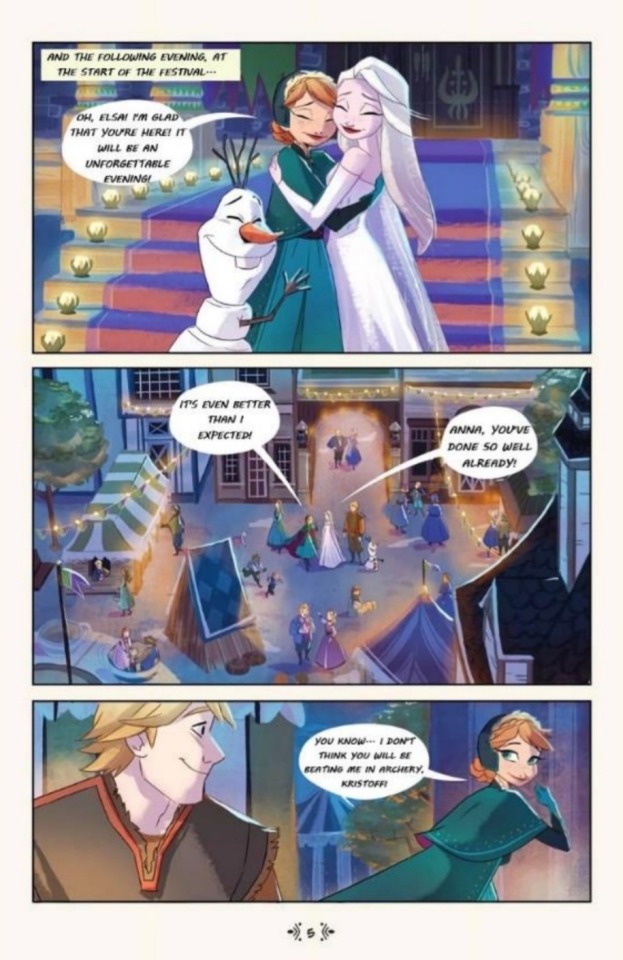
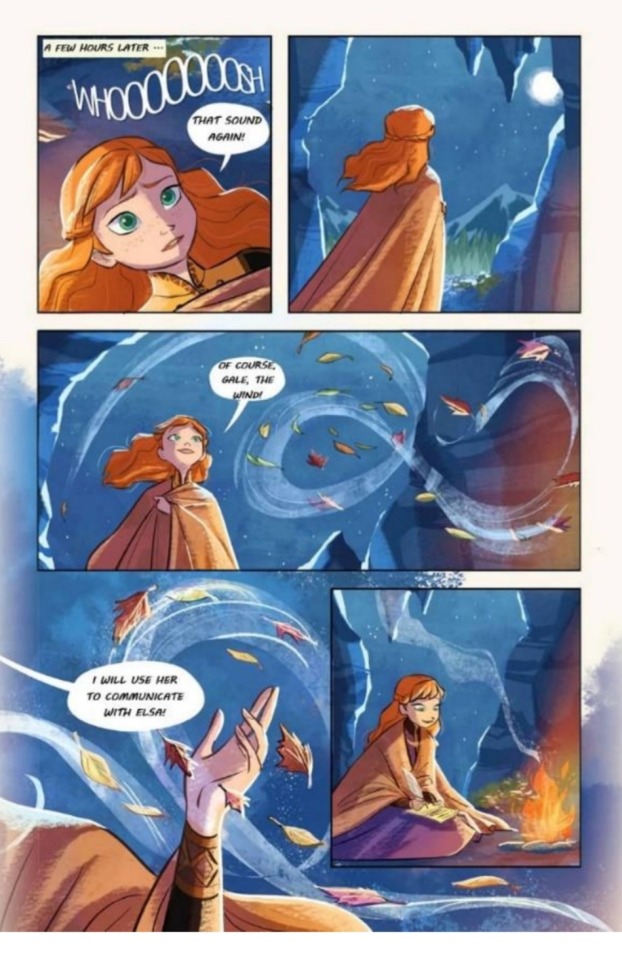

A couple weeks ago I made a post about a new Frozen 2 comic released in Italian called "L'Avventura di Anna" (Anna's Adventure). As of now there has been no announcement of an official English version, however fellow Frozen fan Siren on Discord has created a full English translated pdf version and has graciously given me permission to share it! (also major shoutout to @chileanon for providing the original scans)
**Click HERE to download the pdf**
I posted my initial thoughts on the book a while back, and having read it fully now, I have to say that it’s definitely one of the better Frozen comics overall; a more serious tone and more detailed story than what we’ve gotten in the short little magazine comics or even the few Dark Horse comics. I guess that makes sense when the author can have a story that spans 90+ pages and isn’t limited to just 12 or so pages like the standard Disney comics.
I suppose my only complaint about the story is that it would have been nice if the rest of Frohana accompanied Anna on her mission, especially Elsa. But I can see why they decided against that - the book is supposed to be all about showcasing Anna’s good qualities as queen (it's called "Anna’s Adventure" after all), and if Elsa and her magic were there too, they would probably outshine Anna, which is why it may have been decided to have some insignificant minor characters come with her instead, who could also provide needed exposition (but this also makes me hopeful that we'll eventually get an equivalent story like this for Elsa!) Having Elsa stay in Arendelle and protect everyone from the rock slides would have made more sense though, since she ends up returning to Arendelle later anyway and there's no reason to think the forest wouldn't be fine without her for a while, but I suppose she wanted to give Anna the benefit of the doubt as far as handling things on her own. And of course, from what I’ve heard of the weird restrictions Disney places on the Frozen comic writers, we don't know if they may have ushered the author into certain choices, for example, requiring at least one scene showing Elsa in the forest even if it didn't make sense in the story. But overall, there was still enough scenes with Anna, Elsa, and the rest of Frohana together for my liking (with minimal Olaf gags, which is appreciated), plus it’s always nice to see Anna come through on her own. And obviously the book had some obligation to be educational too as far as the effects of deforestation and land development on natural habitats, which I didn't mind...making a connection like this to the real world just enriches the Frozen world further!
A couple things to note that I didn’t pick up on before reading the English version is that this story takes place a few months after Anna’s coronation, as mentioned on page 23. Also on page 12, Anna says that Elsa protects the animals “and people” of the Enchanted Forest, which may be one of the only references to the Northuldra in all the post-Frozen 2 stories so far! 😅
Anyway, while not top-tier Frozen material, this comic was a nice read among the many mundane comics we get in the magazines. I hope this style of Frozen comic wasn't a one time thing and we'll see more it in the future. Even though I prefer the art style of the magazine comics, I greatly prefer the longer and more fleshed out stories and scenes that a comic novel like this can offer!
88 notes
·
View notes
Text
the racism and imperial ambitions of Kew Gardens, plant-collecting expeditions, major scientific institutions of Europe, especially between 1700 and 1900, etc., were merely “covert”? just a little bit “problematic”?

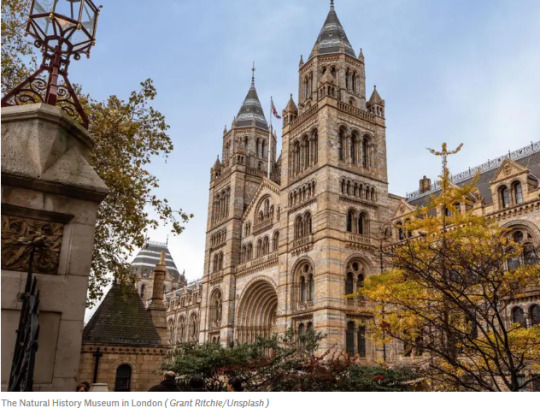
The Natural History Museum is planing to review its collections following fears from museum bosses that they could cause offence. A review has been commissioned in the wake of the Black Lives Matter movement, which will include an audit of the statues, rooms and individual items which staff members think show "legacies of colonies, slavery and empire".
In documents [...], the executive board told staff the museum would undertake a review into room names, statues and collections [...]. According to the paper, one curator said "science, racism and colonial power were inherently entwined", and that any collections deemed "problematic" could be renamed or even removed. [...]
It is thought the review will look at the Charles Darwin collection, whose trip to the Galapagos Islands on HMS Beagle was cited by a curator as one of Britain's many "colonialist scientific expeditions". The documents said “museums were put in place to legitimise a racist ideology”, and that “covert racism, exists in the gaps between the displays”. However, speaking to The Standard, a spokesperson for The Natural History Museum said: "Recently we started a review to better understand the history of our institution as a historical and contemporary global collection of natural history specimens.”

Headline, photo, tw!tt*r screencap, and text from: Duffield. “Natural History Museum is due to review ...” Evening Standard. 7 September 2020.
----
Stuff:
- Charles Darwin considered Indigenous people of Tierra del Fuego as less intelligent/sentient than domesticated dogs; Carl Linnaeus explicitly and directly plotting colonization and calling Southeast Asian, Latin American Indigenous, and Chinese people “barbaric”, “poor”, etc.
- The tale of breadfruit domestication, the mutiny on the Bounty, and plantation owners plotting with Kew Gardens to take plants from Indigenous Polynesians and domesticate crops to undermine slave gardens in the Caribbean.
– “Ghostly non-places; settler-colonial hallucinations and fantasy visions; monstrous plants and animals; hiding, destroying, re-making ecological worlds; permanent cataclysm; the horror of settlement”: Anna Boswell on settler-colonial agriculture/ecology and the role of scientific institutions in legitimating imperial constructions of “new worlds.”
– Conflating women with “bloodthirsty” and “flesh-eating” plants, and the dehumanization of Indigenous cultures through the scientific illustrations of imperial scientific agents and artistic depictions of plants from colonized ecosystems (Euro-American art/botany, 1700s to early 1900s).
- When naturalists from Kew Gardens tried to import marsupials from Australia in order to naturalize the kangaroo to English ecosystems in an attempt build imperial/nationalist identity and pride by demonstrating how the English countryside is friendly, perfect, superior, welcoming to life, unlike the dangerous tropical landscapes at Empire’s frontier (1790s to 1850s).
- Scientists and land managers of Canadian federal government attempting to expand control over the Arctic/sub-Arctic by purposely killing caribou herds to weaken Indigenous autonomy before importing European reindeer to better control Indigenous foodsheds. (1890s to 1930s.)
- How the gardens, horticulture, and food markets of poor/dispossessed/enslaved in the Caribbean allowed autonomous food networks to exist and undermine plantation owners. (Late 1700s, early 1800s.)
- Grasses, seed merchants, and “the Empire’s dairy farm” in Aotearoa. (European agriculture in late 19th and early 20th centuries.) And: The role of grasslands, deforestation, and English grasses in ecological imperialism in Aotearoa, early 20th century.
- The Scottish-born chief coroner of Adelaide who robbed graves, dissected bodies, and took the skulls of at least 180 Aboriginal people for his home collection. (1900-ish to 1920-ish.)
- Pineapple, breadfruit, and plantations “doing the work of Empire” in Hawaii.
- Mapuche people, Valdivian temperate rainforest, and Chilean/European state plots to colonize Valdivia by dismantling the rainforest to undermine Mapuche autonomy and to create “Swiss or German pastoral farm landscape”.
- Carl Linnaeus and botanists’ racism against India and Latin America, and the use of botanic gardens to acquire knowledge as an exercise of “soft empire.”
- How Atomic Energy Commission and academic ecologists from the US knowingly and purposely used Polynesian/Micronesian people as human test subjects and profited off of nuclear weapons testing in the South Pacific. (Contains many direct quotes from the scientists. Extremely graphic.)
- Dandelions, other non-native plants, and settler gardens changing soil of the Canadian Arctic. (Late 1800s and early 1900s.)
- European botanic gardens in 18th-/19th-century Mexico and Central America as a tool of imperialism and knowledge systematization. (“Botany began as atechnoscope – a way to visualize at-a-distance – but, at the end of the eighteenth century, it was already a teletechnique – a way to act at-a-distance.”)
- Memes for when you see a mention of “Joseph Banks” or “Kew Gardens” in any magazine, academic article, museum exhibit, documentary, or something.
- “Fugitive seeds”: Seed-keeping and plant knowledge among Black communities in the US as an alternative current of thought compared to the scientific racism of 19th century scientific institutions.
- How European botanists experimented under the reign of Leopold in the Belgian Congo before transplanting African oil palm to Southeast Asia to establish the first major oil palm plantations; today, 100 years later, oil palm monoculture ravages Southeast Asia and the same plantation company still owns property across Africa.
- Wild rice, “cottage colonialism” in Canada, imaginative control, the power of names and naming plants. (1780 to present.) And: Kew Gardens plotting to take Native strains of wild rice and domesticate them for cheap and profitable consumption in other imperial British colonies.
- Calcutta Botanic Gardens abduction and use of Chinese slaves; Kew Gardens (successfully) plotting to steal cinchona from people of Bolivia to service their staff in India; botanic gardens’ role in large-scale dispossession to create plantations in Assam and Ooty (1790s - 1870s).
547 notes
·
View notes
Text

Julie Mehretu, Untitled 2, 1999. Private collection. Courtesy of White Cube. © Julie Mehretu

Julie Mehretu, Hineni (E. 3:4), 2018. Centre Pompidou, Paris, Musée national d’art moderne/Centre de création industrielle; gift of George Economou, 2019. © Julie Mehretu. Photography:Tom Powel Imaging
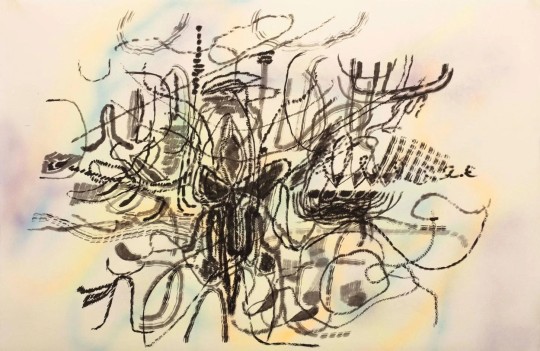
Julie Mehretu, Mind-Wind Field Drawings (quarantine studio, d.h.) #1, 2019-2020. Private collection, courtesy Marian Goodman Gallery New York/Paris. © Julie Mehretu. Photography courtesy Marian Goodman Gallery

Julie Mehretu, Mogamma (A Painting in Four Parts) Part 1, 2012. Guggenheim Abu Dhabi. © Julie Mehretu. Photography: White Cube, Ben Westoby

Julie Mehretu, Conjured Parts (eye), Ferguson, 2016. The Broad Art Foundation, Los Angeles. © Julie Mehretu. Photography: Cathy Carver

Julie Mehretu, Migration Direction Map (large), 1996. Private collection. © Julie Mehretu. Photography: Tom Powel Imaging
At home with artist Julie Mehretu
CAMILLE OKHIO - 25 MAR 2021
Julie Mehretu speaks with the joy and conviction of someone who has had the freedom to investigate all their interests. Curiosity has led her to the myriad topics, objects and moments that inform her work, among them cartography, archaeology, the birth of civilisation and mycology. Since the 1990s, her practice has expanded outwardly in all directions like a spider web. A lack of understanding and preconceived notions among reviewers have often led to her work being flattened – simplified so that it is easily digestible – but in reality, her work is far from a simplistic investigation of any one topic. It encompasses multitudes.
The artist’s recent paintings are mostly large scale, but her early works on paper (often created with multiple layers – one sheet of Mylar on top of another) are as small as a six-inch square. The works often comprise innumerable minuscule markings – tremendous force and knowledge communicated through delicate inkings and streaks. Their layers reveal, rather than obfuscate. And though Mehretu’s creative process springs from a desire to understand herself better, the work itself is in no way autobiographical.
Born in Addis Ababa, Ethiopia, on the tails of a continental rejection of colonialism, and raised there, then in Michigan, Mehretu has a flexible and full-hearted understanding of home. It is not one physical place, but many, all holding equal importance. On 25 March, Mehretu will present her first major retrospective at the Whitney Museum of American Art, with works spanning 1996 to 2019. The institution is an important one for Mehretu, as it played host to several pivotal shows in her youth.
Her exhibition has served as an impetus for Mehretu to look back at her already prolific career, observing and organising the thoughts, questions and answers she has put forth for over two decades. The six years it took to bring this exhibition together proved an incredibly valuable time of reflection, fatefully dovetailing with a year of quarantine.
Wallpaper*: Where are you as we speak?
Julie Mehretu: I’m in my studio on 26th Street, right on the West Side Highway. I’ve worked here for 11 years.
W*: Are there any artists, writers or thinkers that have had a meaningful impact on you?
JM: I don’t know how to answer that because there are literally so many! It’s constantly changing. Right now, Kara Walker, David Hammons, William Pope.L, and younger artists like Jason Moran (who has made amazing work around abstraction). There are so many artists that have been informative and important to me: Frank Bowling, Jack Whitten, Caravaggio.
I also look at a lot of prehistoric work, from as far back as 60,000 years ago, as well as cave paintings from 6th century China and early prehistoric drawings in the caves of Australia.
W*: What’s the most interesting thing you have read, watched or listened to recently?
JM: For the last few weeks I’ve been immersed in Steve McQueen films. I’ve been bingeing on lovers rock music. And a TV show that really moved me was [Michaela Cole’s] I May Destroy You. It’s difficult, but it was really well done and powerful.
Ocean Vuong’s novel On Earth We Are Briefly Gorgeous is amazing. The Mushroom at the End of the World by Anna Lowenhaupt Tsing is a really incredible book too – she studies this mushroom that became a delicacy in Japan in the 7th century. It started growing in deforested areas – it’s in these places destroyed by human beings that these mushrooms survive. [I find it interesting] that this mushroom grows on the edge of precarity and destruction. Like with Black folks, there is a constant aspect of insisting on yourself and reinventing yourself in the midst of constant effort of destruction.
W*: What was the first piece of art you remember seeing? How did you feel about it?
JM: One of the first times I remember being moved by a work of art was looking through my mother’s Rembrandt book. We brought so few things back from Ethiopia and that was one of them. [Particularly] Rembrandt’s The Sacrifice of Isaac. That story is so intense. I was so moved by the light and the skin and the way the paint made light and skin.
W*: Do you travel? If so, what does travel afford you, and what have you missed about it during Covid-19?
JM: I travel a lot, but I haven’t travelled this year. There has been this amazing sense of suspension and a pause in that. I miss travelling, but going to look at art, watching films, reading novels and listening to music is the way I travel now. For instance, I’ve been listening to Afro-Peruvian music and now I want to go to Peru.
Before I know it we will be back in this fast-paced, zooming-around environment – there is something I want to savour by staying here, now, in this time and absorbing as much as I can.
W*: You are said to have a vast collection of objects and images. Walk me through your collection – what areas, materials, makers and things have the largest presence and why?
JM: When you enter our home there is this long hallway. Framed along the wall we have around 20 fluorescent Daniel Joseph Martinez block-printed posters he made with words – almost poems. Our kids grew up reading those. One says ‘Sometimes I can’t breathe’ and another one says ‘Don’t work’, while some are really long.
We also have a great Paul Pfeiffer photograph of one from the Four Horsemen of the Apocalypse series. We have a group of Richard Tuttle etchings right over our dining table. We have an amazing David Hammons body print as well, and my kids’ work is all over the house.
W*: As the daughter of immigrants and an immigrant yourself – how do you conceptualise home and how do you create it?
JM: There were a lot of times I felt very transient – as a student and a young adult, going in and out of school and residency programmes. It always came back to music and food. There are certain flavours, foods, music, smells that you take wherever you go. Also as a mother, I’m building a home for my children. Home becomes something else because of them. They are the core of home now.
W* How has motherhood affected your practice?
JM: I became much more productive when I had kids for several reasons – one is that I felt a lot of pressure to make [work] in the time I wasn’t with them, which of course is unsustainable. A large part of making is not making – thinking and searching.
When I got to work I could get into it much more quickly. Kids grow and change so fast, you feel time is passing so you need to use it. I wasn’t going to stop working, that’s for sure. All women who are pushing in their lives make that choice.
W*: What is your favourite myth and why does it hold importance for you?
JM: Right now I’m reading Greek myths to my ten-year-old. We’ve read them before, but he wanted to read them again. I still read to him at night even though he’s a voracious reader himself.
The myths I remember the most are myths I’ve come across in visual works. Titian’s Diana and Actaeon – I know that myth so well because of his painting. Bernini’s mesmerising sculpture of Apollo and Daphne I saw in Rome, where her body becomes a tree. The leaves are so delicately carved into the marble, it’s a work of incredible beauty. I’ve been considering this deconstructionist approach to mythology. Storytelling becomes this place to interrogate propositions, which is what I think mythology does.
W*: Have you experienced a flattening of your work?
JM: I’m always concerned with flattening and pigeonholing. That is something that happens to artists like us all the time. When I first was working and showing there was a bit of that happening with my work. It was put into the space of cartography or an architectural analysis of it. It was said to be autobiographical work.
The art world tries to consume. There is this desire to flatten and the desire for Black artists to be a reflection of their experience. I don’t think any artist is like that at all. In reality, none of us are flat. We all contain multitudes and are complicated – that has always been the core of the Black radical tradition.
34 notes
·
View notes
Text
Post # 140
Ralegaon Siddhi : a rags-to-riches story!
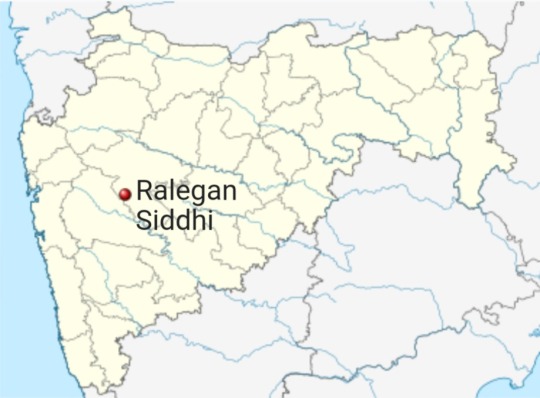
Ahmednagar, a district in central Maharashtra, contains a village housing a little under 2500 people. The village's name is Ralegaon Siddhi, also spelt as Ralegan Siddhi.
Before 1975, Ralegan Siddhi was one of the many villages of India plagued by acute poverty, over-population, drought, inadequate conservation of rain water due to soil erosion and run-off, low crop yields, low income, deprivation, neglect and hopelessness. Villagers needed to go the neighbouring village to get drinking water. Imagine that!
By 2000, 25% of its residents, i.e. about 1000 people earned over INR 5 lacs per year. Ralegan residents reportedly had private savings of INR 3 crores. Not a single villager depended on government drought relief measures. The village became so prosperous that a major bank opened its branch there. By Indian standards, Ralegan Siddhi had become a rich village.
A World Bank report endorsed that the village of Ralegaon Siddhi had transformed itself from a highly degraded village ecosystem, in a semi-arid region of extreme poverty, to one of the richest in the country. Today, this little village in West India, has become a case study of sustainable development for the entire world!
But how did this miracle happen? Therein lies a tale!
It all began, when a 38 year old, ex-army serviceman, returned to his ancestral village, Ralegaon Siddhi, in 1975, having taken voluntary retirement from the armed forces. His name is Kisan Baburao Hazare. You probably know him as Anna Hazare!
And, if the story of Anna Hazare and Ralegaon Siddhi doesn't convince you that one man can make a difference, nothing ever will.

Anna Hazare grew up in Mumbai, because his village didn't have a school. He dropped out after 7th grade, because he couldn't afford to continue. He then started selling flowers in the Dadar. In time, he owned two flower shops.
When he was 23, he joined the Indian army as a truck driver. In 1965, he was posted on the Punjab border during the Indo-Pak war. The experiences of wartime, coupled with his acute poverty affected him so much that he considered suicide at one point.
One day, while driving the truck, an enemy bomb/missile struck them and Anna Hazare was the sole survivor. This experience made him ponder the meaning of life and death. He felt that God wanted him to stay alive for some reason. He decided to dedicate his life to service of mankind.
In 1975, after 15 years in the armed forces, he took voluntary retirement and went back to Ralegoan Siddhi.

Anna Hazare returned to find Ralegoan Siddhi in a sorry state of affairs. Although most of the villagers owned some land, cultivation was extremely difficult due to the rocky ground, preventing retention of the monsoon rains. This situation was worsened by deforestation, soil-erosion and droughts. Crop yield and productivity was low, hence incomes were low and poverty was high.
One person from the village resorted to illicit liquor vending, as this seemed lucrative. His success attracted many others. Soon, the economy of the village had become reliant on the illegal manufacture and sale of alcohol, a product on which many of the villagers had become dependent. Many inhabitants borrowed from moneylenders to survive, paying monthly interest rates of as much as 10%. Crime and violence (including domestic violence) had become commonplace.
Education, health and hygiene were poor. There was only one school, upto 4th grade. Caste system and untouchability were rampant. Net-net, the scene was bad.

Anna Hazare had savings of INR 22000 from his provident fund and gratuity. The first task he undertook was to use INR 3000 of his funds to rebuild the decrepit Yadavbaba Temple, which was in a decrepit state. Seeing this selfless act, the village elderly felt inspired to support him and donated small amounts of money and generous amounts of free labour to construct the temple. Thus was born the concept of Shramdaan, or donating labour. Affection and respect for Anna increased.

Some youth also became involved in the work and so Anna organised a Youth Association called Tarun Mandal.
Anna and Tarun Mandal then decided to take up the issue of alcoholism to drive a process of reform. At a meeting conducted in the temple, the villagers resolved to close down liquor dens and ban alcohol in the village. Since these resolutions were made in the temple, they became, in a sense, religious commitments. Over thirty liquor brewing units voluntarily closed their establishments. Those who did not succumb to social pressure were forced to close their businesses when the youth group smashed their premises. The owners could not complain as their businesses were illegal. Once three drunken villagers were tied to pillars and then flogged, personally by Anna Hazare, with his own army belt. Sale of tobacco, cigarettes and beedies were also banned. The youth group brought all the tobacco, cigarettes, and beedies from the shops in the village and burnt them in a Holi fire. Tobacco, cigarettes, or beedies are no longer sold in Ralegaon Siddhi.
In 1980, Anna Hazare started a Grain Bank at the temple. Farmers with surplus grain production would donate a quintal to the bank. In times of need, others could borrow the grain, but they had to return the amount of grain they borrowed, plus an additional quintal as an interest. This ensured that nobody in the village ever went hungry or had to borrow money to buy grain. This also prevented distress sales of grain at lower prices at harvest time.
Probably the highlight of Anna Hazare's work is the Watershed Development Programme, which has been studied and copied extensively.
Ralegan Siddhi is located in the foothills, so Anna persuaded villagers to construct watershed embankments to stop water and allow it to percolate into the ground. This increased the ground water level and improved irrigation in the area.
When Anna Hazare came to Ralegan Siddhi in 1975 only 70 acres of land was irrigated. Today, about 2,500 acres are irrigated.
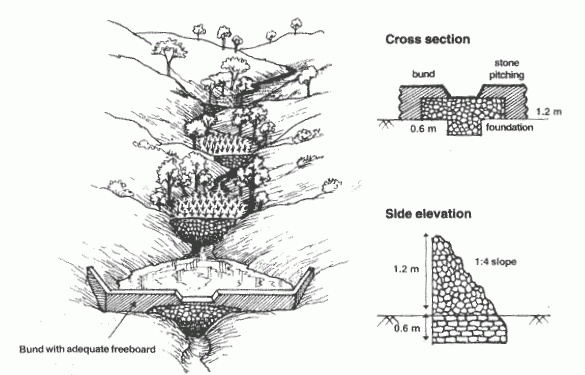
Cultivation of water-intensive crops like sugarcane was banned. Crops such as pulses, oilseeds, and certain cash crops with low water requirements replaced them. This improved yield and income.
Under Anna Hazare's moral leadership, villagers gradually decided to shun untouchability and caste discrimination. The Dalits have become integrated into the social and economic life of the village. There are examples of upper caste villagers building houses for the lower caste Dalits as a part of Shramdaan.
Today, there is a drinking water tap every 100 meters in the village.
Look at how beautiful a transformed, prosperous village looks!
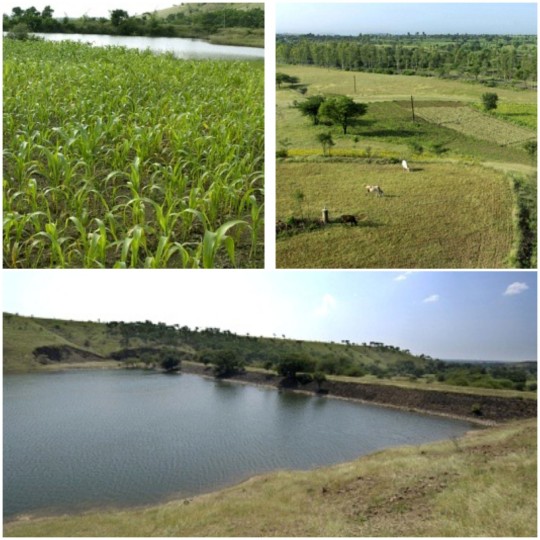
Here is a comprehensive list of all initiatives taken by Anna Hazare in Ralegaon Siddhi since he first arrived in 1975.

The Ralegan model owes its success to the strong value system that Anna was able to establish based on principles of sharing, compassion and equity. This value system is epitomised through the four bandis (bans) with which the villagers agreed to comply, namely – Nashabandi (ban on addiction), Nasbandi (sterilisation for population control), Kurhadbandi (ban on felling trees or deforestation) and Charaibandi (ban on grazing of cattle on green fields) and, additionally, Shramdaan.
The Government of India recognized his work by conferring the Padma Shri in 1990 and Padma Bhushan in 1992.
From 2000 onwards, Anna Hazare took his social activism to the national stage, with his movements against corruption and other forms of poor governance.
But this post remains a tribute to the grassroots - Kisan Baburao Hazare and the villagers of Ralegaon Siddhi, who took ownership of their situation and transformed themselves into a rags-to-riches story.
#anna hazare#Ralegaon Siddhi#ralegan siddhi#ahmednagar#maharashtra#kisan Baburao Hazare#indo pak war#Watershed development program#watershed#grain bank#nashabandi#nasbandi#Shramdaan#padma shri#padma bhushan
6 notes
·
View notes
Text
Food Giants Seek Ban on Soy From Deforested Brazil Region

Some of the world’s largest food companies and grocers urged commodity suppliers including Archer-Daniels-Midland Co., Bunge Ltd., Cargill Inc. and Louis Dreyfus Co. to stop trading soybeans associated with deforestation in the Cerrado region of Brazil, a hive of biodiversity and one of the country’s most important carbon sinks.
Nestle SA, Unilever, McDonald’s Corp., Walmart Inc., Tesco Plc and other consumer-goods companies demanded in a letter that the traders refuse to trade soya from deforested regions of the Cerrado starting next year.
“We source much of our soy from the Cerrado region, so it’s vital we play a leading role in protecting this biodiverse region for future generations,” Anna Turrell, Tesco’s head of environment, said in a statement Tuesday. “We’re calling on traders to step up their own commitments and implement robust monitoring, verification and reporting systems within the region, and set a 2020 deforestation and conversion-free cut-off date for soy from the Cerrado.”
The letter was sent by more than 160 signatories of the Consumer Goods Forum’s Cerrado Manifesto Statement of Support. Other recipients were Cofco International and Viterra, a subsidiary of Glencore Plc.
Continue reading.
#brazil#brazilian politics#politics#environmentalism#environmental justice#soy#food#farming#cerrado#mod nise da silveira
1 note
·
View note
Text
For my first blog, i would like to speak about my interests and things that i enjoy doing. My favorite kinds of art are animation and watercolor pencils drawings which are linked with cartoons. I love TV and film art which are surrounded with my favorite TV shows such as The vampire diaries, The 100, American Horror Story, Outer Banks and Friends etc. I also love Disney films since I was really young, my favorite Disney films are Princess and the frog and Tangled. I am a massive huge fan of Harry potter and know all the films back to back. For my age, I love old school films and music. I love Grease, Breakfast club, Clueless, Pretty Woman, Notting Hill and many more. This applies to my music taste to, I love Queen, Madonna, Whitney Huston, Fleet wood Mac and so many more.
Another thing that I am really interested in is Interior Design, I love keeping my room tidy and finding different ways of designing my room to express my interests. One of my walls in my bedroom is covered in movie posters, album covers, my favorite quotes, TV programs and films. I love my room and feel so comfy and cosy. This links to my love for interior design, i love designing things and helping other people find there style for there room.
Another thing that i am absolutely obsessed with is Christmas. I absolutely love being cosy and cold at Christmas time. The festive feels with winter and being with your family, is my favorite time of year. I love decorating the whole house ready for Christmas. I also have a little job at Billy Bates Fun Fair, which runs throughout Christmas, which is really fun. I love Christmas music and films, my favorite Christmas film is Nativity 1.
Also, I have got into reading a little bit more and i really enjoy it. At the minute I am reading the After Series by Anna Todd, I have watched the first film and I thoroughly enjoyed it. I would like to widen my imagination a little bit more though and carry on reading different books. I love films, books and tv shows I feel like it is my comfort zone to explore different stories.
I love going on pintrest and making different boards and pins, of my favorite films, collage walls for my bedroom, TV shows which i have got invested in, different actors and genres of music. I feel like this is a massive way of trying to express your self and I also find it really fun to do and a relaxation method. It also makes me feel more motivated when I have a clean area to do work with when I’m at home.
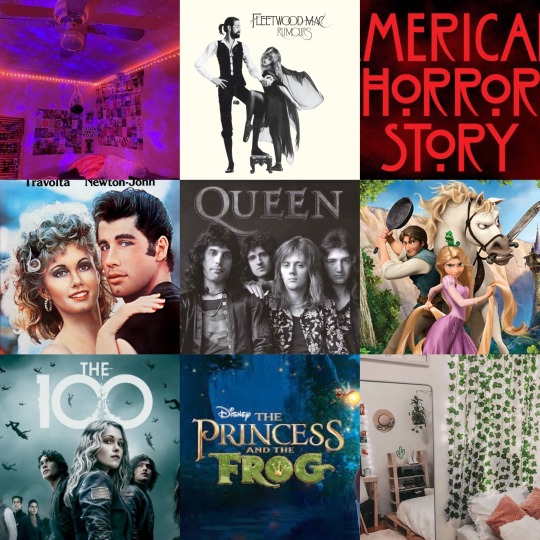
Image 1-

In our lesson today, we needed to look at images in depth. The first image, is of a man in a painting with a pair of glasses in front only showing one lens. The man in the image seems to be identified as Vicent Van Gogh- a famous artist, giving us the idea that this photo has been taken in an art gallery. Deeper into this, knowing that the sentence at the bottom of the photo is in french could imply that this is taken in the famous Louvre museum in a France. The sentence translates into ‘see more clearly for less’ showing that this could be for a advertisement for glasses, where the sellers are trying to show the good prices of the glasses. The colours in this picture, are very light and have the same colours of blues and greens throughout the photo with hints of brown. I think that this photo would have a very different effect if the colours where changed, the colour scheme is very happy and has very little darkness. I think that the focal point in this photo is definitely the mans face, only because of the lense focusing on it and making it more realistic then the rest of the photo. The part of the photo which is focused by the glasses looks like a real life photo of a man, unlike the other half which looks like a painting . This implies how good these glasses really are; which is the message that the advertisers are trying to get across, to sell to customers.
Image 2-
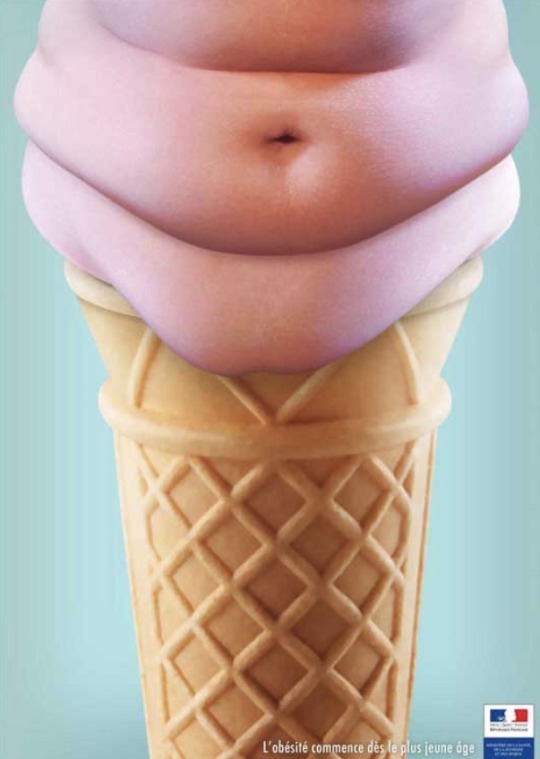
This next image shows an ice cream, which has a normal cone but the ice cream has been replaced by an oversized stomach. The colours in this photo are quite plain, however the main three parts of the image have completely different colours. I think that there is a massive reasoning for the colours as, they have used quite nice happy colours when the subject it is based on is quite serious. This could be because they do not want to offend anyone. The focal point in this image is straight away the ‘ice cream’ which is actually an oversized stomach. It’s the first thing that you see when you look at the image and it makes you think what it actually is. This advertisement also is french which is implied by the symbol at the bottom with the colours of the French flag and the sentence in french which is translated into ‘obesity starts at a young age’. This implies that this advert it directed to children, which also can be implied by the ice cream as it is a very child-like food.
Image 3-

This image shows a man with a car painted on his face, getting punched by another man with a car painted on his hand to create the image of two cars colliding and crashing into one another. It is stated clearly underneath ‘Stop the violence, don’t drink and drive’ implying that this is an advertisement about awareness of drinking whilst driving. The colours on this image are a lot darker than the other, showing that this is a serious problem happening all around the world. The only colours which stand out from the dark background is the two cars which are red and green. I think a reason why the cars are a different colour are to show that this can happen to anyone because these are quite popular car colours. The focal point in my opinion is the mans face, you can tell that he is in pain which shows how bad it could be. Another thing I picked up on in this photo is the text. The words in this image are different sizes and colours, the words ‘Stop the violence’ are in white and ‘don’t drink and drive’ I found this unusual as it would be the other way around because red is a colour I associate with the world violence.
Image 4-
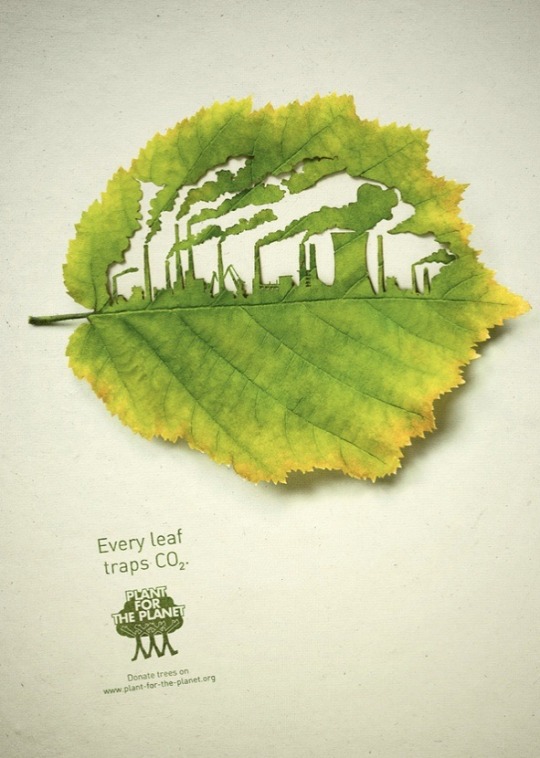
The next image seems to be based on an advertisement to do we saving trees, the advert is clearly raising awareness. The colour scheme for this advert is quite bright, the colour green is definitely the main focus. Green is a colour that I would normally associate with nature, therefore this links really well with the purpose of the advert. I definitely think that if the colour was different then it wouldn’t link as well. The focal point of this image appear to be the leaf with the city shaped in the middle. It shows huge amounts of smoke coming out of these factories showing the huge effect on the trees. To conclude, I think that this advert is all about saving the trees.
Image 5-
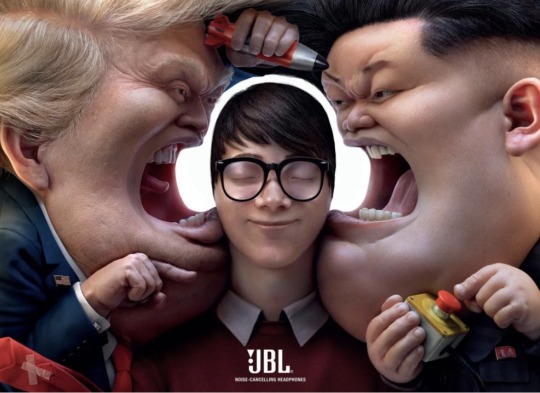
The next image, is my favourite out of the 7. The image shows two political leaders Donald trump and Kim Jong Un screaming into a boys ears, however he cant hear any of it due to have headphones in. The headphones are labelled ‘noise canceling’ showing that they block all the sound out. I did some further information into this advert to learn that it was for a campaign called ‘block out the chaos’. In my opinion this obviously means blocking out all the bad things gong in the world. The two things in this image that signify this the most is the rocket and the red button. I feel like the both show ideas of war and heavy violence. This is also shown by the colour red being used throughout the image, as the colour red could signify the feeling of anger. In this image I don’t really feel that the colours would change much because it is spreads it point across really well, however the colour red does tie in really well with the subject. I don’t think that there is a focal point ethier in this image as there is so much going on, however there definitely is a running theme of violence. Another thing i have noticed is the only white space is the headphones blocking out the sound, the colour white represents purity and peace.
Image 6-
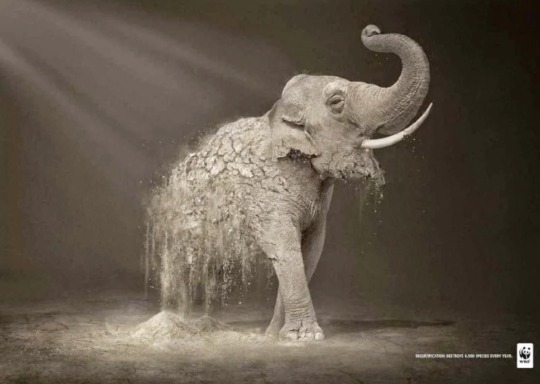
This image clearly shows a elephant which is crumbling as if it is made out of stone. The colours in the image are very dark and there isn’t any bright colours, this therefore implies that this is a serious advert. In the corner is the logo for WWF (World Wide Fund For Nature) showing us that it is an advert about awareness for animals. The main focal point in the image is clearly the elephant, as it is clear and the message of the elephant becoming hurt of extinct is clear. In the corner there is a quote saying ‘desertfircation destroys 5,000 species every year’. Desertfircation meaning the process by which fertile land becomes desert, typically as a result of drought, deforestation, or in appropriate agriculture. This implies that where these elephants are living isn’t safe and they are struggling to survive.
Image 7-

Image 7 shows a cup with a car printed on the lid where the straw is coming out of the gas pipe on the back of the car. It displays a clear piece of text stating ‘Pollution is closer than you think, friends on the earth’. I think that this text implies how brainwashed the world is. I think that the world every day uses more cars, buses, taxis, trains, planes and this obviously causes more pollution but people aren’t aware of this. There for this advert raises a lot of awareness. The colour scheme is quite plain and bland, however I think this suits the advert well as sometimes colours can be distracting from the real message making more people focus on the text.
2 notes
·
View notes